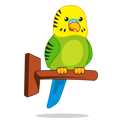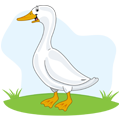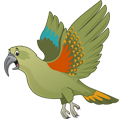 Pea fishing This is a great game, especially on hot summer days. Take a fairly flat dish (a paint roller tray works really well). Pour in some lukewarm water, add some frozen peas and place the tray on a flat surface (put a towel underneath in case of spillage). Then add rats and watch them dive for the tasty treats!
Pea fishing This is a great game, especially on hot summer days. Take a fairly flat dish (a paint roller tray works really well). Pour in some lukewarm water, add some frozen peas and place the tray on a flat surface (put a towel underneath in case of spillage). Then add rats and watch them dive for the tasty treats!
Some water loving rats will be brave and jump right in. Others may just perch on the side and grab the peas with their hands. Either way, it's great fun for them and great fun for you to watch.
Boxes of fun: Get a whole pile of different sized boxes from the supermarket (muesli boxes work well also) and place them randomly on the floor of a rat proof room. They have a great time sniffing the new smells, running through the random tunnels made by the pile and playing in the boxes.
Cat feather toy: Rats love to chase around a feathered cat toy. Move it around in fast zig-zag and large circle movements – remember let your rat catch it now and again. It's hilarious to watch them try and attack it, pounce on it and stalk it. This is great exercise for them too and even the squishiest, laziest rats usually show interest in it. Just remember not to leave the feather toy lying around where the rats can get it unsupervised.
The human jungle gym: Sometimes there's nothing more entertaining to a rat that you. Rats love to explore and climb all over you. Whether it's shirt diving (watch out for those sharp nails!), shoulder riding, running up and down your arms, playing with and grooming your hair or biting those socked feet! Rats can find us humans very entertaining.
Chase the hand: This game is especially popular with young rats although there are the occasional older ones that still like it. You can use your hand to gently play wrestle with a rat, tickle their tummies and chase them with your hand.
Piñata for rats: This is a great toy idea, and it's cheap and easy. Wrap a few strong-smelling treats in some paper towels and bind it with string. Hang as many as you like throughout the cage. Another version is to take one toilet roll tube, add some treats and then scrunch up the edges of the toilet roll to close it. Tie some string around it; tie the string to the top of the rat enclosure and….voila! One slightly harder-to-get-into piñata!
Treat balls: These balls are a big hit! Rats are very crafty, and you'll have a great time watching them work out how to get as many treats from the ball as they can for as little effort as possible. They are made for cats but are small enough for rats to use. They have an adjustable opening, so you can change it to suit whatever treats you are putting inside.
Bird & dog toys: Cotton rope toys are great for rats to play on and climb. They can be found in the dog and bird sections of the pet shop. The bird section has stiff rope perches which rats enjoy walking along, and the dog section has chew/tug-of-war toys which can be hung and used for climbing. The rats will probably chew on the rope!
Shelves & ledges: Rats enjoy multiple levels in their cages. A few products that can add levels are movable platforms, hanging baskets, hammocks, tubes and tents.
Igloos: There are several types of igloos available for rats from most pet stores; however, if you want to get creative, you can also make houses out of ice cream containers, lunch boxes or larger food storage containers. Then of course you can always throw a full tissue box in the enclosure to provide hours of nesting fun and a temporary house to sleep in and then destroy!
Climbing accessories: Rats love to climb. You can outfit their enclosure with such things as ladders, ropes, wooden bird branches, and climbing tubes. You will find many good climbing toys in the ferret and bird department of the pet shop. Take care to not use climbing toys in the cages of elderly or ill rats.























 Pea fishing
Pea fishing 
.JPG)
.JPG) Rats love hammocks! There are so many ways to make them and use them differently for variety. Here are a few simple ideas:
Rats love hammocks! There are so many ways to make them and use them differently for variety. Here are a few simple ideas:









